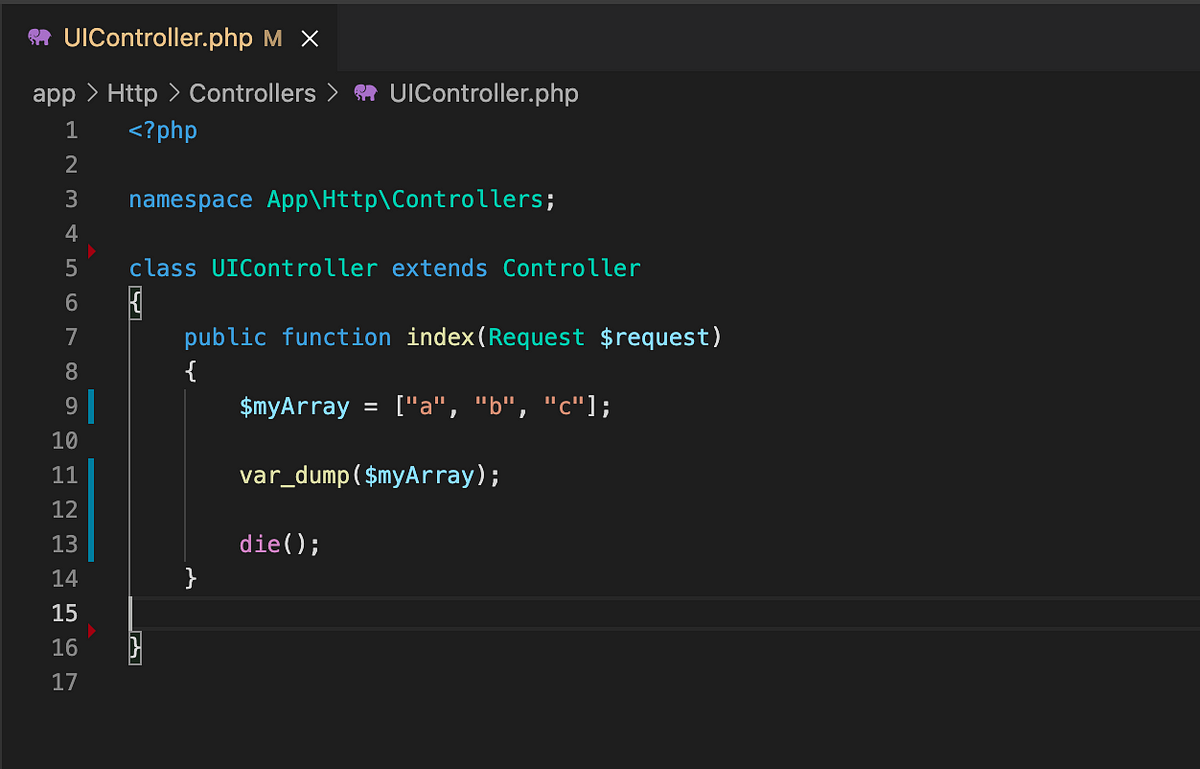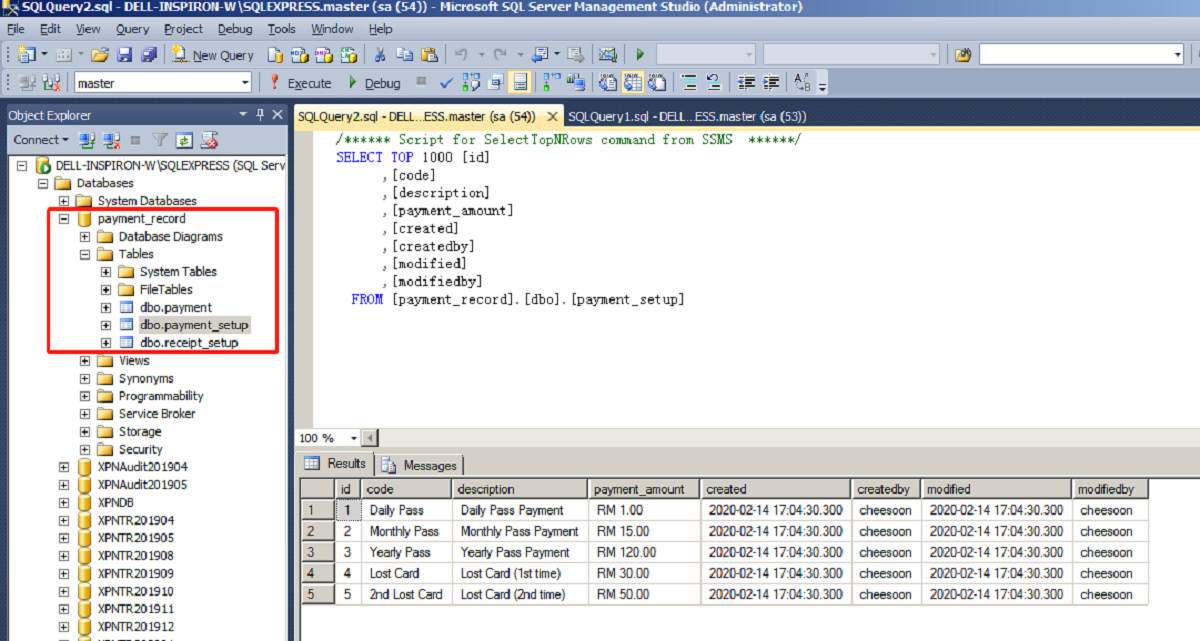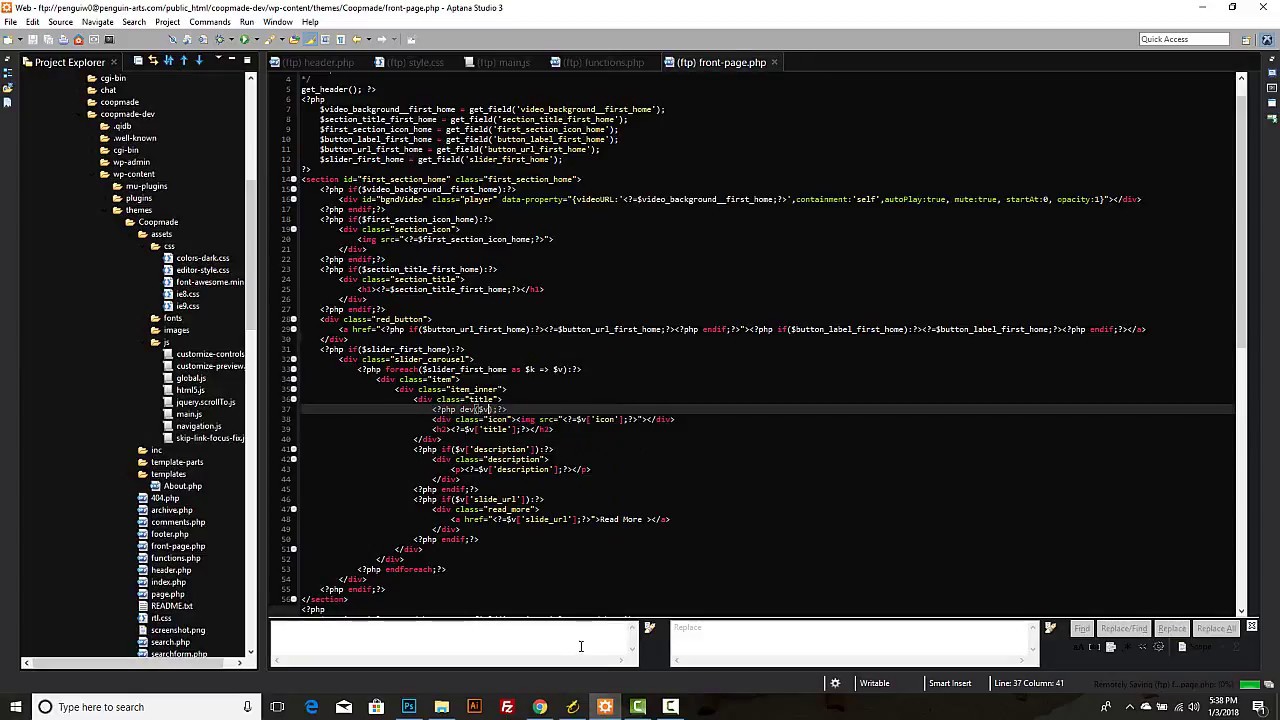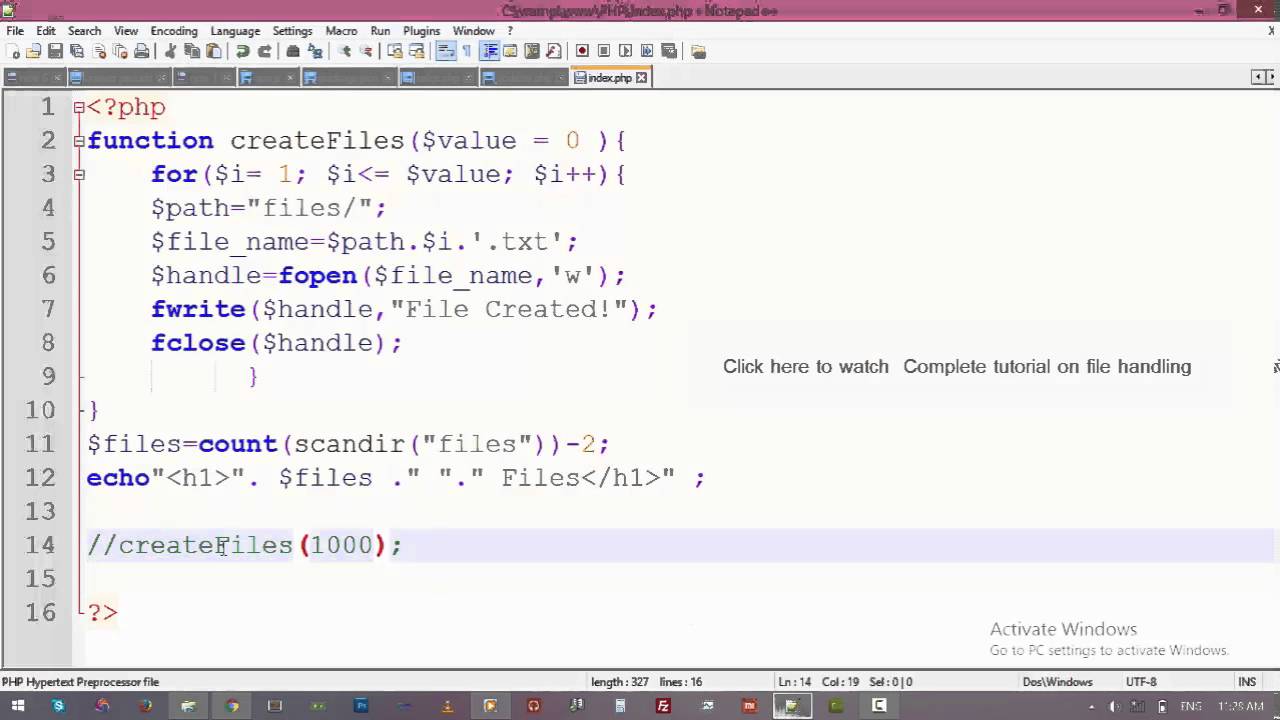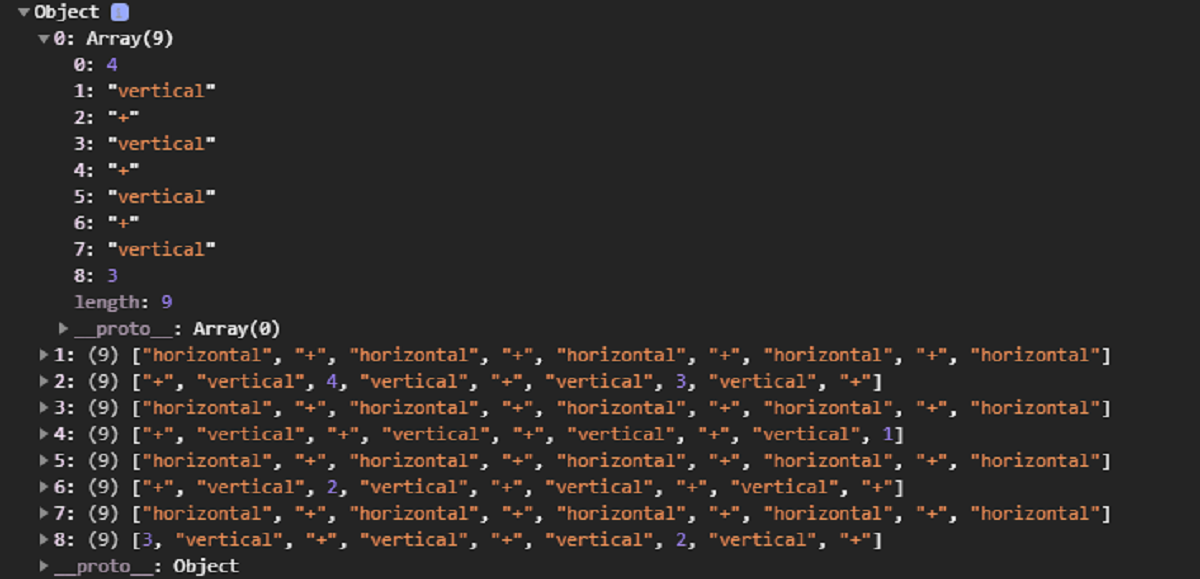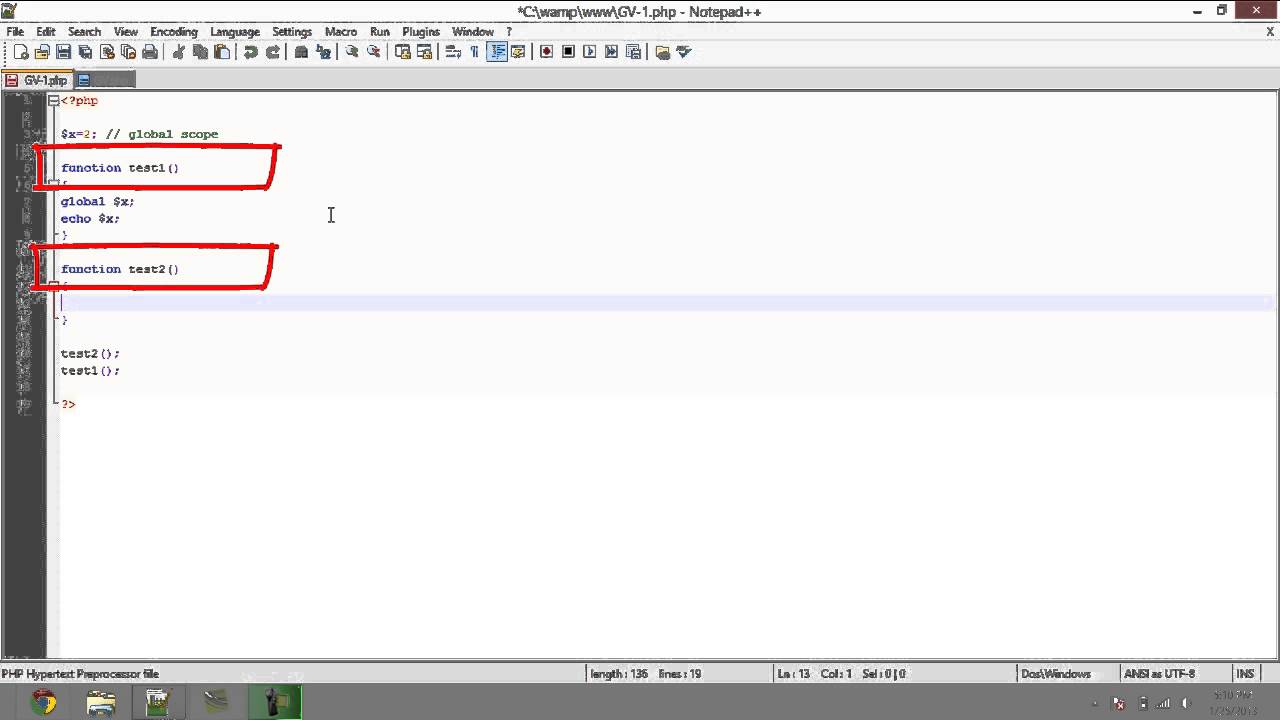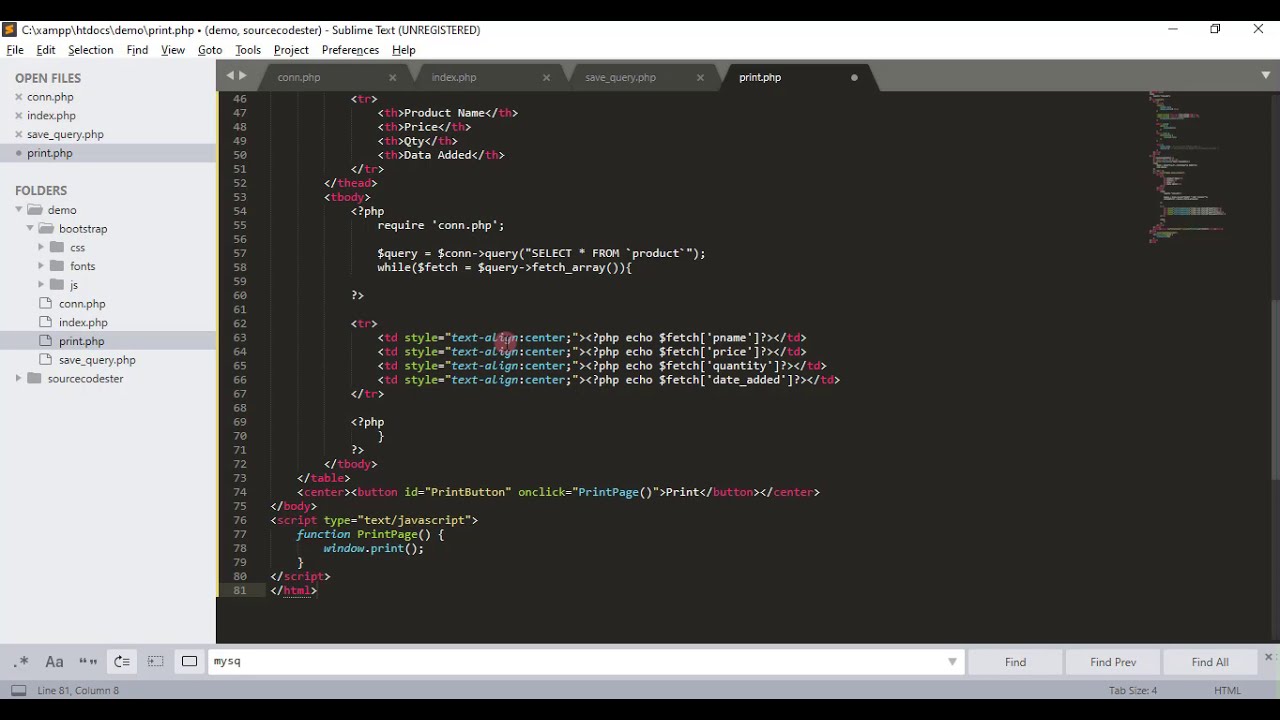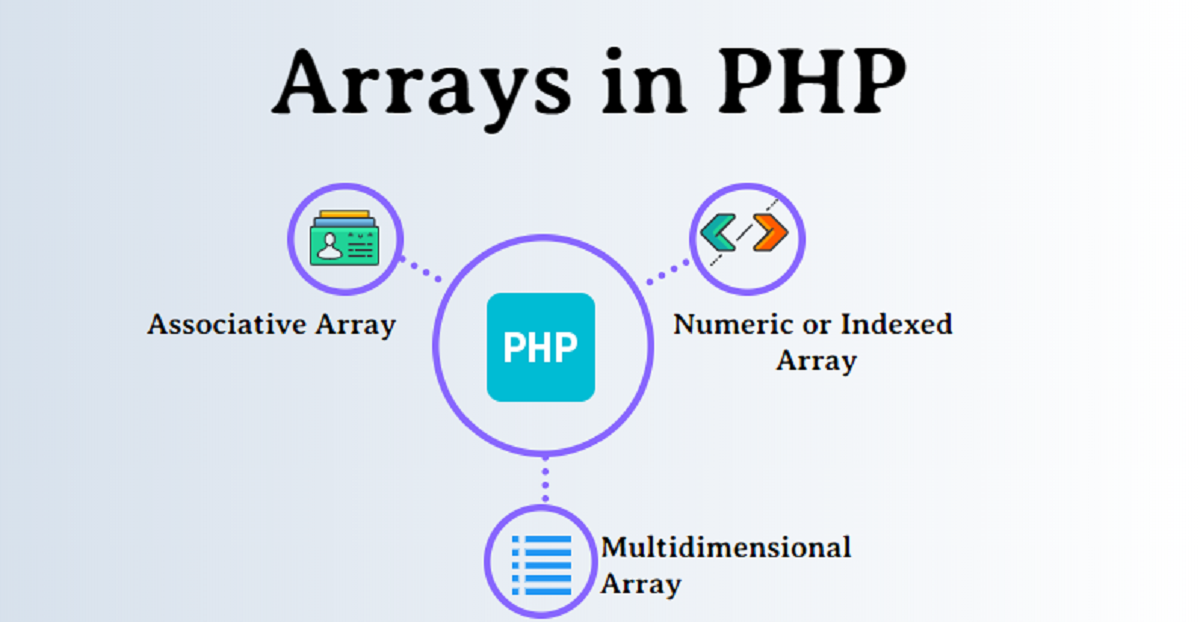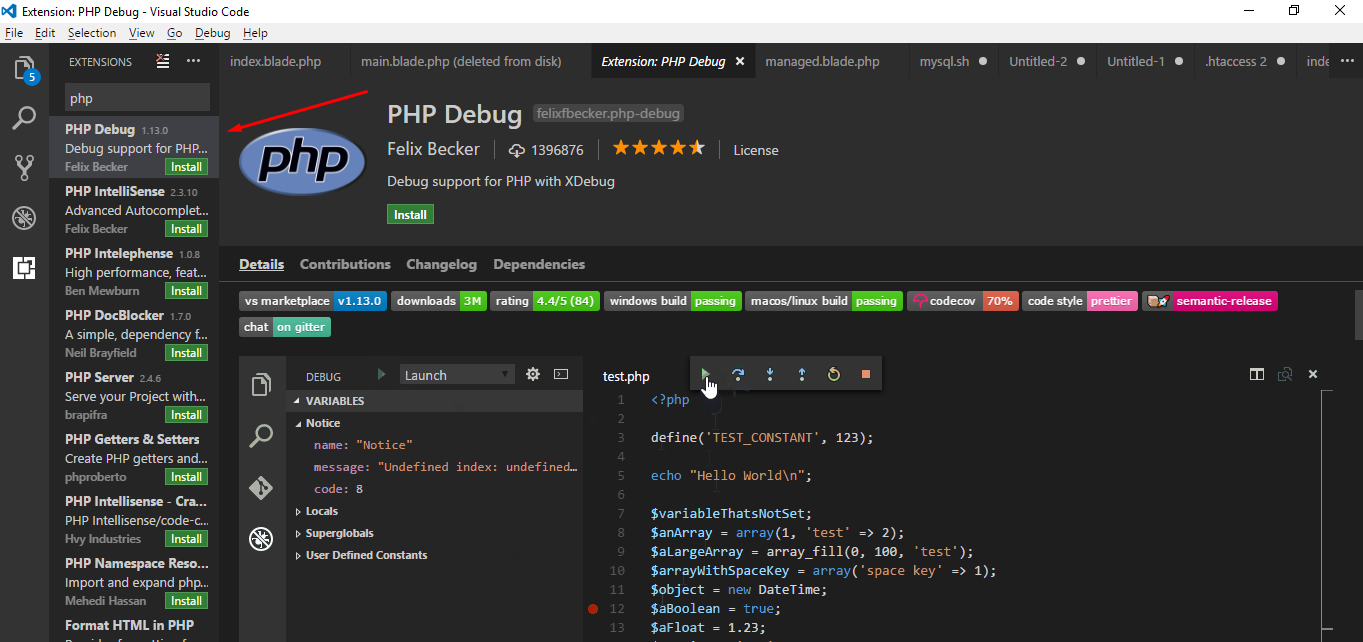Introduction
When working with arrays in PHP, it is often necessary to print or display their contents for debugging or presentation purposes. Printing an array allows us to see the values stored within it, making it easier to analyze and manipulate the data. PHP provides several methods to print arrays, each serving a specific purpose.
In this article, we will explore different techniques to print arrays in PHP. We will start with the basic method of using the var_dump() function to get a detailed output of the array’s structure and values. We will then move on to the more commonly used echo or print_r() functions, which provide a more readable and concise representation of the array.
We will also cover formatting options to improve the readability of array output, such as using line breaks and indentation. Additionally, we will discuss how to loop through an array and print each element individually. This is particularly useful when you want to perform specific operations on each element of the array.
Furthermore, we will delve into printing multidimensional arrays, which contain arrays as elements. We will learn how to access and print specific elements from such arrays using array indexes. This can be handy when you want to retrieve and display specific data from a multidimensional array.
To present array data in a more structured and organized manner, we will explore printing arrays in a table format using HTML. This is especially useful when you want to display tabular data to the users, making it easy to read and comprehend.
By the end of this article, you will have a strong understanding of various techniques and methods to print arrays in PHP. This knowledge will empower you to effectively work with array data and make the most out of its contents.
How to Create an Array in PHP
In PHP, an array is a variable that can hold multiple values of different data types. Creating an array is a straightforward process and can be done in multiple ways.
One way to create an array in PHP is by using the array() function. This function allows you to specify the values of the array within the parentheses. For example, to create an array with three elements, you can write:
$myArray = array("apple", "banana", "orange");
In this example, we have created an array called $myArray with three elements: “apple”, “banana”, and “orange”. Each element is assigned an index starting from 0, so “apple” is at index 0, “banana” is at index 1, and “orange” is at index 2.
Another way to create an array is by using the shorthand notation, also known as square bracket notation. This notation allows you to define an array by explicitly specifying the index for each element. For example:
$myArray = [0 => "apple", 1 => "banana", 2 => "orange"];
Both methods yield the same result. The choice largely depends on personal preference and coding style.
It is also possible to create an empty array and add elements to it later. To create an empty array, you can use an empty set of parentheses or square brackets. For instance:
$myArray = array();
or
$myArray = [];
Once you have created the array, you can add elements using the array index. For example:
$myArray[0] = "apple";
$myArray[1] = "banana";
$myArray[2] = "orange";
Now, $myArray contains the same elements as before.
In PHP, arrays can also have associative keys, where each element has a unique identifier instead of a numeric index. To create an associative array, you can use the array() function or the shorthand notation with the keys specified. For example:
$person = array("name" => "John", "age" => 30, "city" => "New York");
or
$person = ["name" => "John", "age" => 30, "city" => "New York"];
In this example, we have created an associative array called $person with keys “name”, “age”, and “city”, and corresponding values.
Basic Array Printing using var_dump()
One of the simplest and most informative ways to print the contents of an array in PHP is by using the var_dump() function. This function displays detailed information about the array, including its structure, data types, and values.
To use var_dump(), you simply pass the array as an argument inside the parentheses. For example:
$myArray = array("apple", "banana", "orange");
var_dump($myArray);
Running this code will output the following:
array(3) { [0]=> string(5) "apple" [1]=> string(6) "banana" [2]=> string(6) "orange" }
The var_dump() function provides various details about the array. It starts with “array(n)”, where n represents the number of elements in the array. In our example, it shows that the array has 3 elements.
Each element is then displayed within square brackets, followed by an arrow (=>), the element’s index, and its corresponding value. In this case, the first element has an index of 0 and a value of “apple”, the second element has an index of 1 and a value of “banana”, and the third element has an index of 2 and a value of “orange”.
Additionally, var_dump() provides information about the data type and length of each element. In our example, it shows that all elements are strings, with lengths of 5, 6, and 6 respectively.
By employing var_dump(), you can easily examine the contents of an array and ensure that it contains the expected values and data types. This is particularly useful when debugging code or troubleshooting issues related to array manipulation.
Note that var_dump() can be used on any variable in PHP, not just arrays. Its versatility makes it a powerful tool for inspecting the structure and data of any variable in your code.
However, it’s important to remember that var_dump() is primarily intended for debugging purposes and may not always provide the most visually appealing output. For better readability and presentation, we will explore alternative methods of printing arrays in the subsequent sections.
Printing Array Elements using echo or print_r()
While var_dump() provides detailed information about an array’s structure and values, it may not always be the most readable or concise way to print array elements. In such cases, we can use the echo or print_r() functions to display the array’s contents in a more straightforward manner.
The echo and print_r() functions both accept arrays as arguments and output their elements. However, they differ in the way they present the array’s information.
The echo function is primarily used to output strings, but it can also be used to print array elements. When echoing an array, it will only display the first element of the array. For example:
$myArray = array("apple", "banana", "orange");
echo $myArray;
The output of this code will be:
apple
As you can see, only the first element, “apple”, is printed. This is because the echo function treats arrays as strings and only outputs the first element, disregarding the rest of the array.
On the other hand, the print_r() function is specifically designed for printing arrays. It displays the structure of the array along with all its elements. For example:
$myArray = array("apple", "banana", "orange");
print_r($myArray);
The output of this code will be:
Array
(
[0] => apple
[1] => banana
[2] => orange
)
As you can see, print_r() displays the entire array, providing each element within square brackets. It also includes line breaks and indentation for better readability.
Furthermore, the print_r() function can also be used with a second parameter, true, to return the output as a string instead of directly displaying it. This can be useful when you want to store the array’s representation in a variable for further processing or manipulation.
Overall, echo and print_r() are convenient functions for quickly displaying array elements. They offer a more concise and readable output compared to var_dump(). However, for more advanced and customized formatting options, we will explore alternative methods in the upcoming sections.
Formatting Array Output for Better Readability
When printing array elements, it is essential to ensure that the output is visually appealing and easy to read. By applying formatting techniques, we can enhance the readability of array representations.
One simple way to format the array output is by adding line breaks between each element. This can be achieved by concatenating the PHP_EOL constant after each element when using echo or print_r(). For example:
$myArray = array("apple", "banana", "orange");
echo implode(PHP_EOL, $myArray);
The output will be:
apple
banana
orange
Adding line breaks makes it easier to distinguish between each element, especially when dealing with long or complex arrays.
To further enhance the visibility of array elements, indentation can be applied. This involves adding leading whitespace to each element to create a hierarchical visual structure. For instance:
$myArray = array("apple", "banana", "orange");
foreach($myArray as $element) { echo " ".$element.PHP_EOL; }
The output will be:
apple
banana
orange
Applying indentation helps in visually separating individual elements and improves the overall readability of the array representation.
Another approach to format the array output is by using the implode() function with a specified delimiter. The implode() function joins the elements of an array into a string using the specified delimiter. For example:
$myArray = array("apple", "banana", "orange");
$output = implode(", ", $myArray);
echo $output;
The output will be:
apple, banana, orange
In this case, the implode() function concatenates the elements of the array into a string, separated by the specified delimiter (“, ” in this example). This formatting method is particularly useful when you want to display the array elements as a comma-separated list.
By applying these formatting techniques, you can significantly improve the readability and visual representation of array output. This makes it easier for developers and users to understand and work with the array data.
Looping through an Array and Printing Each Element
Often, we need to process each element of an array individually, performing specific operations or displaying them in a customized format. To accomplish this, we can use loops to iterate through the array and print each element one by one.
One commonly used loop for iterating over arrays is the foreach loop. The foreach loop allows us to access each element of an array without needing to manually track the index. Here’s an example of how to use a foreach loop to print each element of an array:
$myArray = array("apple", "banana", "orange");
foreach ($myArray as $element) {
echo $element . ", ";
}
The output will be:
apple, banana, orange,
In this example, the foreach loop iterates over each element in the $myArray array, assigning the current element to the $element variable. Inside the loop, we can perform any desired operation on the element, such as printing it using echo.
It’s important to note that the loop will iterate through each element in the array, regardless of its type or size. This makes foreach loops a versatile tool for printing the contents of any array.
Additionally, if you need to access the array’s keys as well as the values, you can modify the loop to include both in the iteration:
$myArray = array("apple" => "red", "banana" => "yellow", "orange" => "orange");
foreach ($myArray as $key => $value) {
echo $key . ": " . $value . ", ";
}
The output will be:
apple: red, banana: yellow, orange: orange,
In this modified example, the foreach loop assigns each array key to the $key variable and the corresponding value to the $value variable.
Using loops to iterate over arrays and print each element allows for greater flexibility and control over the processing of array data. It enables us to perform specific actions on individual elements and tailor the output to meet our specific requirements. Whether you need to manipulate the array elements or display them in a customized manner, loops provide a powerful mechanism for accomplishing these tasks.
Accessing and Printing Multidimensional Arrays
In PHP, multidimensional arrays contain arrays as their elements. These arrays within arrays can be nested to represent complex data structures. When working with multidimensional arrays, it is important to know how to access and print their elements effectively.
To access and print elements of a multidimensional array, you can use nested foreach loops. Each loop corresponds to a level of nesting in the array structure. Here’s an example to illustrate this concept:
$myArray = array(
array("apple", "banana", "orange"),
array("cat", "dog", "elephant"),
array("green", "red", "blue")
);
To print each element of this three-dimensional array, we would need three nested foreach loops:
foreach ($myArray as $outerArray) {
foreach ($outerArray as $innerArray) {
foreach ($innerArray as $element) {
echo $element . ", ";
}
}
}
The output will be:
apple, banana, orange, cat, dog, elephant, green, red, blue,
In this example, the first foreach loop iterates over the outer array, which contains three inner arrays. The second foreach loop iterates over each inner array, and the third foreach loop traverses each element within the inner array, printing it using echo.
By using nested foreach loops, we can access and print each element of a multidimensional array, regardless of its depth or complexity. This approach allows for precise control over how the elements are processed or displayed.
It’s also worth mentioning that you can access specific elements of a multidimensional array using array indexes. The index of each dimension is specified within the square brackets. Here’s an example:
echo $myArray[0][1];
The output will be:
banana
In this example, we are accessing the element “banana” from the first inner array (index 0) of the outer array.
Accessing and printing elements of multidimensional arrays requires understanding the array’s structure and using appropriate techniques such as nested loops or array indexing. By mastering these techniques, you can effectively work with complex array data and harness its full potential in your PHP projects.
Printing Specific Elements from an Array using Array Indexes
In PHP, arrays are indexed data structures, which means that each element in the array is associated with a unique index. To print specific elements from an array, we can use array indexes to access and display those elements.
Array indexes begin at 0 for the first element, and subsequent elements have consecutive ascending indexes. To print a specific element, we use the array variable followed by the index of the desired element enclosed in square brackets. Here’s an example:
$myArray = array("apple", "banana", "orange");
echo $myArray[1];
The output will be:
banana
In this example, we are printing the element at index 1 of the $myArray array, which corresponds to “banana”. Keep in mind that array indexes are zero-based, so “apple” is at index 0, “banana” is at index 1, and “orange” is at index 2.
You can also print multiple elements from an array using multiple array indexes. Simply separate the indexes by commas within the square brackets. For example:
$myArray = array("apple", "banana", "orange", "grape");
echo $myArray[0] . ", " . $myArray[2] . ", " . $myArray[3];
The output will be:
apple, orange, grape
In this case, we are printing the elements at indexes 0, 2, and 3 of the $myArray array.
It’s crucial to ensure that the chosen indexes are within the range of the array to avoid errors. Trying to access an index that does not exist will result in an “Undefined index” notice.
By using array indexes, we have the flexibility to print or display specific elements from an array. This is particularly useful when we only need to show certain data points or when we want to present a subset of the array to the user.
Remember to pay attention to the array indexes and choose the appropriate ones based on the desired elements. By leveraging array indexing, we can work with arrays more precisely and selectively access the data we need.
Printing Arrays in a Table Format Using HTML
When it comes to presenting array data in a visually structured and organized manner, printing arrays in a table format using HTML is an excellent choice. This format allows for clear and systematic representation of array elements, making it easier for users to understand and interpret the data.
To print an array as a table in HTML, we need to iterate through the array using loops and generate the necessary HTML tags. Here’s an example to illustrate the process:
$myArray = array(
array("Name", "Age", "City"),
array("John", 30, "New York"),
array("Emma", 25, "San Francisco"),
array("Michael", 35, "London")
);
To convert this multidimensional array into an HTML table, we can use nested foreach loops to iterate through each element and generate the appropriate HTML tags:
<table>
<tr>
<th>Name</th>
<th>Age</th>
<th>City</th>
</tr>
<?php foreach ($myArray as $row): ?>
<tr>
<?php foreach ($row as $element): ?>
<td><?php echo $element; ?></td>
<?php endforeach; ?>
</tr>
<?php endforeach; ?>
</table>
This code creates an HTML table structure with table headers defined in the first row of the table (inside the <tr> tags). The inner foreach loop generates the table cells (inside the <td> tags) for each element in the array.
When executed, this code will generate the following HTML table:
| Name | Age | City |
|---|---|---|
As you can see, the array values are neatly organized into rows and columns, making it easy to read and comprehend. The table structure provides a clear visual representation of the data, which is particularly useful when dealing with larger arrays or displaying tabular data to users.
By leveraging HTML and incorporating loops to iterate through the array, we can effectively present array data in a table format. This approach offers both functionality and aesthetics, enhancing the readability and usability of the array information.
Conclusion
Printing arrays in PHP is a fundamental task when working with data. Understanding the different methods and techniques available for printing arrays allows us to effectively analyze, manipulate, and present array data.
We explored various approaches to print arrays in PHP, starting with the basic var_dump() function, which provides detailed information about the array’s structure and values. We then learned about using echo or print_r() to display array elements in a more readable and concise manner.
To improve the readability of array output, we discussed formatting options such as adding line breaks, indentation, and using the implode() function to join array elements with a delimiter. These techniques ensure that the array data is presented in a clear and organized format.
We also explored how to loop through arrays and print each element, both in regular and multidimensional arrays. By using foreach loops, we can easily access and process each element, making it convenient to perform operations on individual array elements.
Lastly, we looked at printing specific elements using array indexes, giving us precise control over which elements to display. This is useful when we only need a subset of the array or want to highlight specific data points.
Moreover, we discovered how to print arrays in a table format using HTML. This approach provides a structured and visually appealing way to present array data, especially when dealing with larger arrays or when displaying tabular information to users.
By mastering these techniques, you can handle array data effectively, ensuring its accurate representation and seamless integration into your PHP projects.
In conclusion, being proficient in printing arrays in PHP is a crucial skill for any developer. It allows for easier debugging, better data understanding, and enhanced user experience through well-organized and formatted array output. With the knowledge gained from this article, you can confidently navigate and manipulate array data in your PHP applications.







